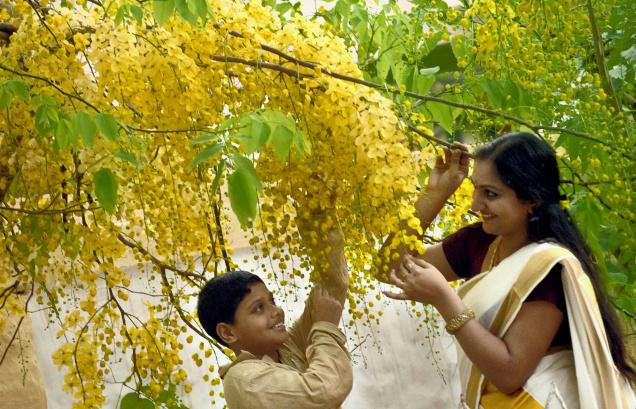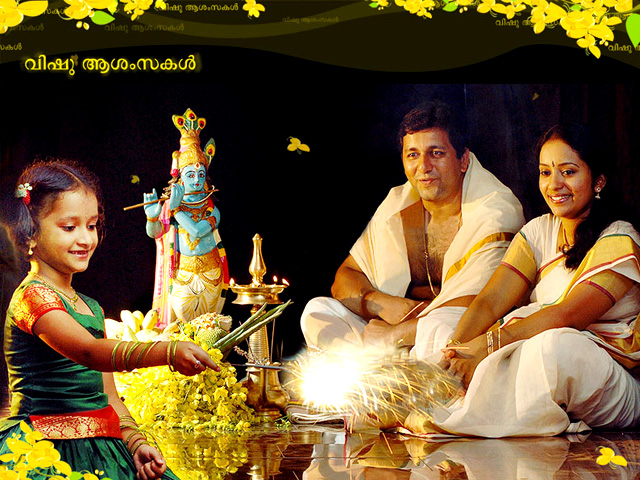
Vishu: Regional New Year in Kerala
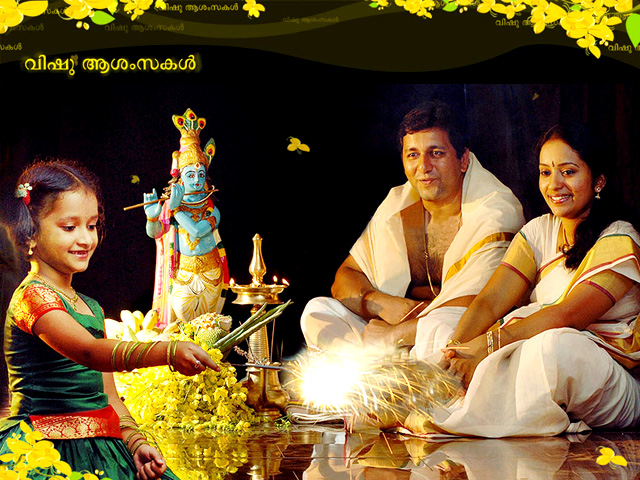
Vishu, the festival of light and fireworks [Courtesy: www.bharatmoms.com]
Celebrated with a lot of fanfare, Vishu marks the New Year in Kerala, India, and is known as the festival of light and fireworks. The excitement and celebrations at this festival are preceded only by Onam, which is the state festival of Kerala.
The New Year in this state is believed to occur when the sun moves into the Medanam zodiac of the Malayalam calendar, which roughly falls around mid-April according to the Gregorian calendar. Vishu, meaning ‘equal’ in Sanskrit, also marks the spring equinox.
Background
The legend of the origin of Vishu centers on Lord Krishna, the 8th reincarnation of Lord Vishnu, the preserver of the universe in Hindu mythology. It is believed that on this day, Krishna battled and killed the demon Narakasura. However, another legend associated is that Ravana was also killed on this day. As he never allowed the sun to rise from the east, this was the first day the sun followed its natural course. As Hindu mythology is rich in legends and folklore, both tales are equally accepted in Kerala.
From a historical point of view, Chithira Vishu is mentioned in an incomplete text called Trikodithanam Shasanam by Bhaskara Ravivarman, who was a ruler of the Chola Dynasty between 962 AD and 1021 AD. While the festival does pre-date this era, it was widely popularized under the rule of Sthanu Ravi between 844 AD and 855 AD.
Although Vishu is celebrated throughout the state, it holds great significance for farmers and tenants in the rural areas of Kerala.
Celebrations
There are a number of customs and traditions that are observed on the day of Vishu, such as:
Puthukodi
Puthukodi refers to the ritual of buying of new clothes. Men, women and children dress in traditional attires and accessorize it with gold ethnic jewelry as this is considered an auspicious metal.
Vishukkani
The word Vishukkani is made up of two separate words i.e. Vishu the festival and ‘Kani’ which means ‘which is seen first’ in Malayalam (the regional language of Kerala). As the name suggests, there is a special ritual where only those objects that are associated with good fortune are seen first thing in the morning. On the night before Vishu, the women of the household place uncooked rice, fruits, laburnum flowers, fresh coins, gold, fresh lemon, betel leaves and golden cucumber in a pot in order to bring in good luck and prosperity to their home. A garlanded idol of Lord Krishna along with a mirror and bell are placed behind the pot. The patriarch is the first to view these things on the day of the festival. Children are woken up from the rooms blindfolded and are made to see these things first before anything else. This ritual is perhaps the most important one.
Many people opt to go to temples for Vishukkani instead of observing it at home.
Vishukaineettam
In order to usher in luck and prosperity, elders present the younger members of the family, as well as the help, with money. This is a symbolic ritual.
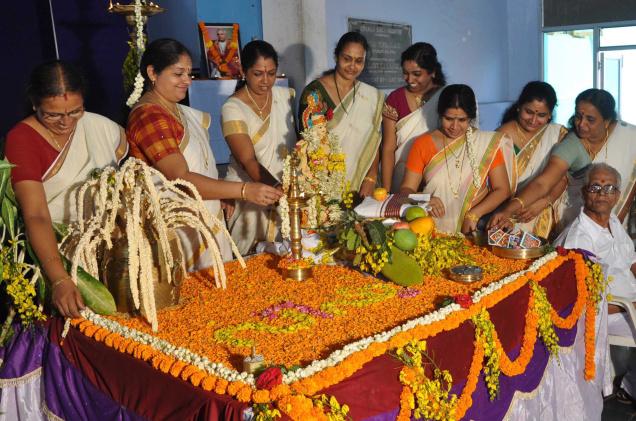 A lavish celebration of Vishu [Courtesy: thehindu.com]
A lavish celebration of Vishu [Courtesy: thehindu.com]
Vishu Chal
As Vishu is also highly significant to the rural folk whose lives center on farming and agriculture, this ritual highlights this aspect quite well. The spade and plough are decorated using rice powder, depositing a special type of pancake in the field by the whole family and then digging channels or ‘chal’ in the field. This field is then used in the remainder of the year to sow grains and other produce.
This is followed by a feast showcasing a wide assortment of delicacies. While the food itself is quite typical to the cuisine of Kerala, it is said to be all the more lavish on this day.
Style and Variety
As is the case with most festivals in India, Vishu has its own set of traditional garb that is donned for the occasion. The men and young boys dress in an off-white or white lungi made of pure cotton. The men also drape a Kasavu cloth around their shoulders.
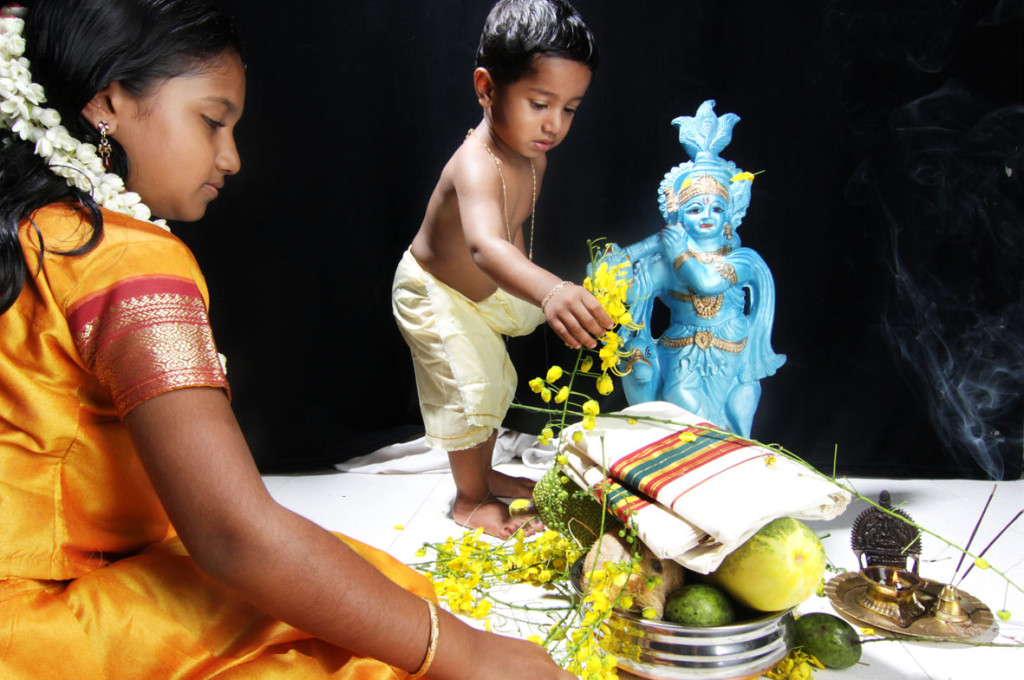 A traditional off-white and gold Kasavu saree
A traditional off-white and gold Kasavu saree
As orange, red and green are considered to be significant colors, women usually wear Kasavu sarees in varying shades of the same. Characterized by the plain white or off-white cotton bodice set off by rich zari work on the border and pallu, this saree can easily be distinguished from all other sarees in the country. This is styled with gold ethnic jewelry as well as jasmine flowers in their hair, which is a highly traditional way to accessorize in Kerala.
Young girls wear colorful Pavada (lehenga) that are also embellished with gold or silver zari. They also wear strings of jasmine in their hair.
Facts and Trivia
- Vishu is celebrated all over Kerala irrespective of religion or sect. Although people from different religions may not observe the religious customs associated with this festival.
- Young girls wear skirts made of banana leaves to portray an entity called the ‘chozhi’. After their performance, they collect rewards from fellow villagers.
- The feast consumed during the day consists of (roughly) equal proportions of bitter, sweet, salty and sour food items.
- Families burst crackers on the night of Vishu.
References
Categories: Festivals

